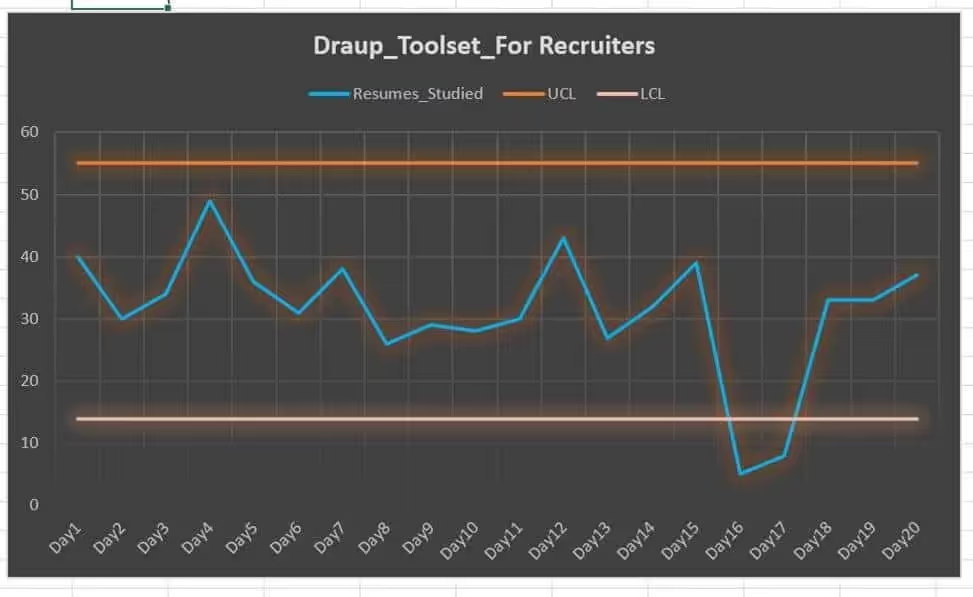Nudging Talent Intelligence into Action – Battle Cards
This week we looked into the aspects of converting data into a story. The inspiration came from the work of Richard Thaler-Winner of the Nobel Prize in Economics – Nudge. This work is slightly an older book (2008) but very much applies to the current world of abundant data. Nudge is a behavioral economics concept that proposes positive reinforcement and indirect suggestions to influence the behavior and decision-making of groups or individuals. Nudging contrasts with other ways to achieve compliance, such as education, legislation, or enforcement.
Recruitment in the age of big data-driven tools is very much an exercise of Nudge. You have to send various Nudge Factors to candidates. The process also needs to be collecting metrics that should act as Nudge (positive reinforcement) to push Recruiter productivity. (many of our clients communicate with us in this manner to get more work done, essentially a gentle Nudge to improve output).
Creating these Nudges is both Science and Art. In the age of Digital Transformation, leaders should master this theory and put it into practice. It can be very simple (like keeping a small bell at a grocery check-out counter to encourage ringing the bell for great service). It can be very complex (like Yale Professor creating the platform Stickk.com to encourage people to reach their goals through Gamification of Nudge).
In this email, we have investigated two aspects of Nudge.
- How can we translate all the data we have to actionable Stories – the one that will Nudge you to act. Here we have looked into the concept of Battle Cards
- How can the routine processes be converted into various charts so that the appropriate Nudge can be triggered? Here we have looked at Control Charts for Resumes Studied
Like in all cases, you can do these yourselves, or we can build the same for you
Nudging Talent Intelligence into Action – Battle Cards
At Draup, we analyze a lot of data. We build complex data sets and generate a significant number of slides. Our job is not to create good looking slides alone but synthesize the data and give you concrete slides. Especially when it comes to competitive intelligence, fewer slides with more insights are better. As a result, we have developed a concept called Battle Cards, which are targeted more for understanding peers and roles. There are a variety of battle cards and types we can build.
Battle Cards for Executive Recruitment
Battle Cards for Peer Intelligence
Battle Cards for Feeder Talent Pool
Battle Cards for Newly Emerging Digital Roles by Company
And so on
Scale and speed are essential where we have done a lot of groundwork. Let us look at the sample role from Walgreens – Visual Merchandiser. (just as illustration). You can see how the metrics are brought in (cost, Job Openings, Hiring process, Reskilling aspects, Digital Stack and targeted locations, and all aspects in one Battle Card).

We can build these for your target peers and roles. Please reach out to us as per your need
An Internal Process Monitoring Control Chart – A positive and intelligent Nudge Tool
Control Charts are age-old tools that can be very useful in Nudging. Control charts, also known as Shewhart charts (after Walter A. Shewhart) or process-behavior charts, are a statistical process control tool used to determine if the process is in a state of control. It is more appropriate to say that the control charts are the graphical device for Statistical Process Monitoring (SPM).
Let us say we are plotting the metric on the number of resumes studied per day by a team of Recruiters. Plotting a control chart around Resumes Studied (as an example) will show whether the process is under control or not. The important thing is to understand when to react. Suppose the data points are within (UCL and LCL – upper control limit and lower control limit, then no action required). But when more data points start breaking the lower control limit (in this case, day16 and day17) – it serves as a Nudge to examine what happens. You do not need to change just for one or two points, but if it becomes a trend, then you correct. If you need a control chart template, let us know we can send the same.











.svg)




















.svg)





.svg)
